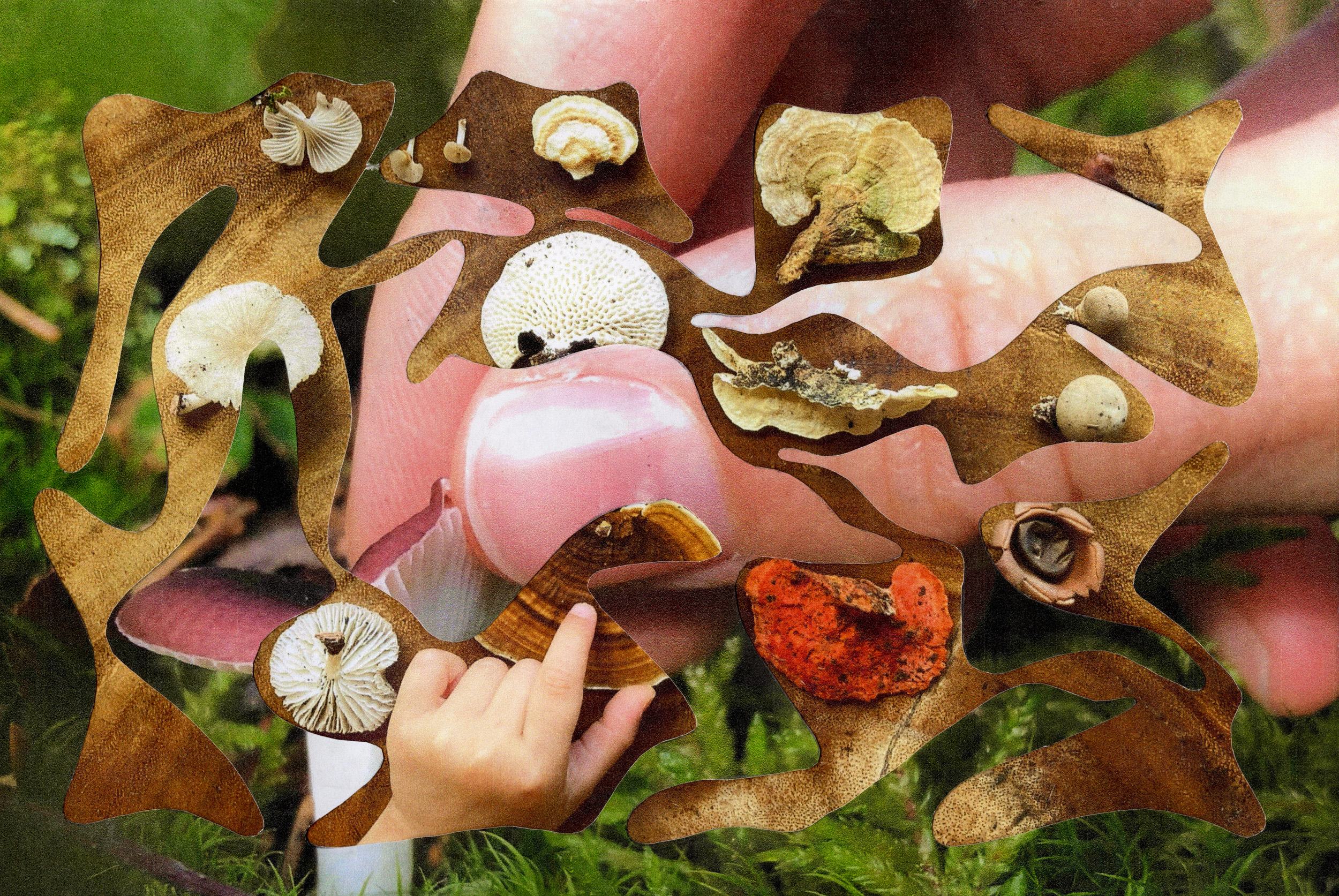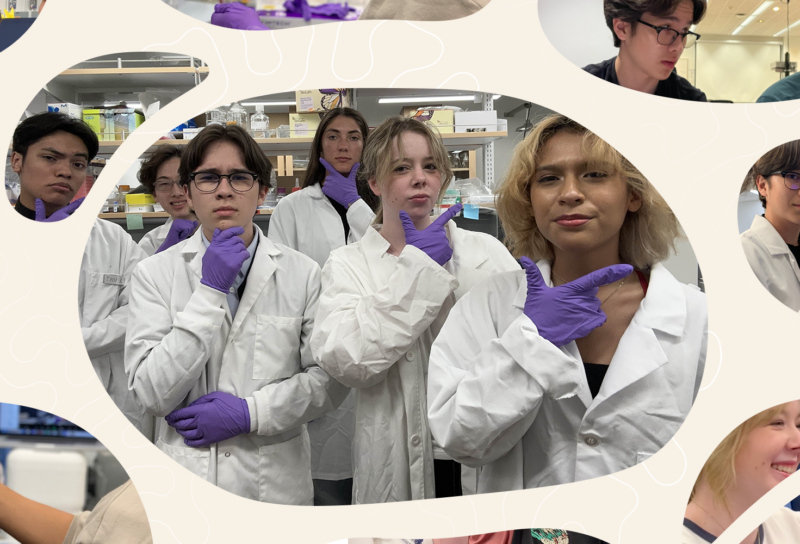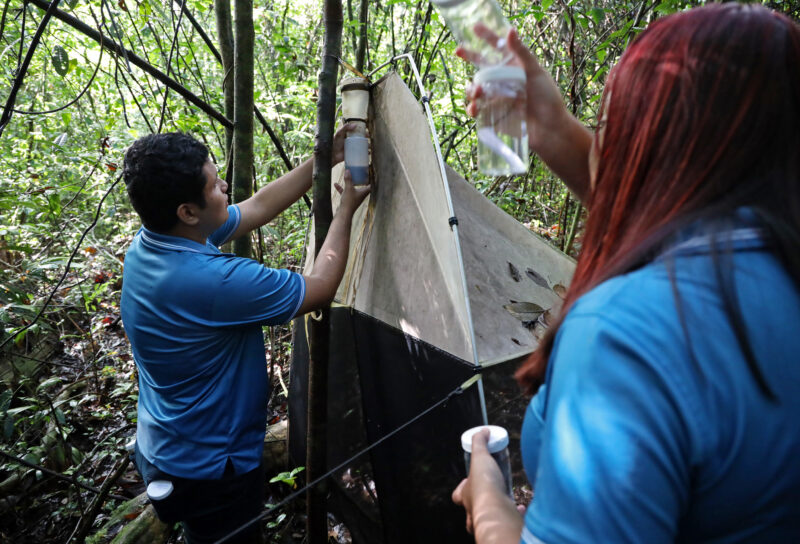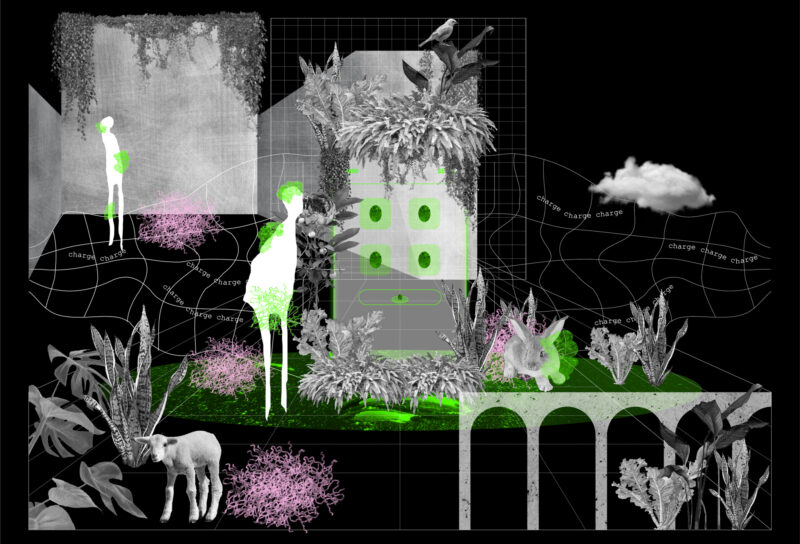Studying biology, biotechnology, and synthetic biology is a regimented affair. People looking to learn about the possibilities of biotechnology, whether or not they even want to do it as a career, often can only access it through formal and expensive university education. Access to a biological future, as a result, is gated off by class and opportunity.
A new generation of biologists, ecologists, and educators is looking to change that. They realize that when biological education is available outside of the classroom, the benefits of this training can be distributed more equitably across society. This “informal” learning connects students with the world of biology through their everyday experiences. They can learn in their family’s kitchen or simply through outdoor play.
GROW editors recently spoke with three experts working to push biology education forward. Callie R. Chappell is a postdoctoral fellow at Stanford University, studying the cultural and environmental implications of biotechnology. Justice T. Walker is an assistant professor at the University of Texas, El Paso, who works on education in emerging technologies for middle and high school settings. Isabel Correa is a postdoctoral fellow and learning scientist at Teachers College, Columbia University, who works on ecologically-mindful pedagogies in the biodesign world.
The infrastructure for informal biological education already exists. Correa connects with students with at-home biology demonstrations, Chappell envisions libraries as a hub for informal science education, and Walker eyes mobile museums to bring biodesign to rural communities. While each of these inroads are crucial, Walker points out that they don’t mean we should simply give up on formal education. A profound cultural shift is possible and warranted if we want to benefit future generations: by purposefully guiding new “pre-service” teachers to prioritize synthetic biology education before they teach their first class.
Our conversation was edited for clarity.
Grow: What is informal biological learning?
Justice T. Walker: I can characterize this as learning in a variety of arrangements you probably wouldn’t see in a formal setting. It could mean learning regularly at home with your family, or spontaneously on a walk. Informal learning captures everything that happens outside of class. And today, with the burgeoning biotechnology scene, people have put together tools and resources that enable us to teach it without fancy machinery or equipment.
Callie R. Chappell: I remember learning about biology from my grandma. Walking around after school trying to find plants that were edible, mixing them up, and making concoctions at home. Another was art classes; going outside and really having to look at ecosystems and look at organisms and understand their relationship through art. There are really powerful places of learning, from our families, from the arts, that really inform how we can reimagine science in powerful ways.
Isabel Correa: Situations like this give us a space and the permission to play. I love how play emerges when you engage in an activity just for the pleasure and for the enjoyment rather than by any serious practical implication. When we are outside of that pressure, that place of enjoyment is really what puts us in a better position for learning, as I see it, because we allow ourselves to step outside of what we know.
Can you give an example of something you’ve tried to teach in an informal space?
Correa: One activity I did was to work with mycelium, inviting teenagers from New York City to engage with this beautiful organism as a creative partner. Working with a local strain, we created living art installations in a local urban park. The goal, in addition to acquiring knowledge about the fascinating kingdom of fungi, was for students to rethink their personal relationships with other living beings in their local socio-ecological community. Informal education allows us to explore this kind of learning goal that, in a formal environment, might still be harder to try out because it’s not directly connected to any standards. Yet in the end, this is what really matters: If we don’t have a relationship with the living world, how are we going to protect it? We can know all the facts about climate change, but if we don’t love nature, if we really don’t have any relationship with other forms of life, how are we going to stand for them?
Now living in Costa Rica, I’m connecting with youth living in rural areas through the world of bioplastics. To reach students in diverse places, I devised an online course paired with a making kit that included everything for students to make bioplastics in their kitchens, everything but additives that students were invited to forage from local waste streams to provide strength, color, or texture to their materials. Again, the goal was not only to gain basic scientific knowledge, but for students to become aware of the material impact of humans on earth while giving them the ability to create healthier and regenerative material flows in their communities.
How do we make this kind of learning more available? What kind of spaces does it require?
Walker: Multiple sets of resources are needed. Physical infrastructure is important, but so is coming up with a shared understanding and praxis. We can look at the maker community [of independent designers and inventors] as a good example; there are maker spaces but there’s also maker praxis, which signals what’s available. And so coming up with a uniform conceptualization of what these spaces are is just as important as the infrastructure. And also thinking about how we might encourage participation that is diverse, not only for reasons related to equity, but also the right to create, innovate, and sustain things that are important in the field.
It sounds like what we’re talking about is engaging the community. What does it look like in practice to achieve that kind of diversity?
Correa: This is something that I have been thinking a lot about here in Costa Rica, where it’s very hard to access community spaces and resources to do this kind of work. Even basic resources that I used to get online in the US are impossible to get here. And this has got me thinking about this idea of reclaiming the kitchen as a space to do experiments and to try new things, and the connection between the kitchen and your immediate environment as the most accessible place to find creatures to partner with.
What I see happening in the US as the biomaking movement grows is that we tend to work with the same organisms all the time — even the same variants of one organism. It’s like what happened with bananas where we all end up eating the same bananas, while there are so many different kinds. We are not only missing opportunities to explore other varieties of organisms that can have their own unique properties to create with but also reducing access when everyone thinks that you must try things with just one kind of, say, mycelium. We are missing opportunities for a diverse range of human and non-human voices to define what it is possible in this emerging field. Can we join crabs to make drawings in the sand or beetles to carve wood in intriguing ways?
Chappell: Well, how can we have biodesign for everyone? How do we reframe biology and biodesign as something that people feel empowered to create with and a sense of responsibility to steward?
Libraries are an example of a space for learning that already exists in the public imagination. And so can we think of the public library as a place where people might gather together and learn about biology and share and design and create and innovate with informed biology? But what if it wasn’t a library, but a LABrary? My current work is thinking about these spaces, and not just the physical infrastructure, but also the intellectual and personal and community infrastructure that come into play. What might a LABrarian be doing in those spaces?
This is just a metaphor for the wide diversity of spaces that could exist, and also to amplify the work that’s already being done and has been done for centuries in communities on the topic of biology: community gardens, land based learning spaces, community bio labs are all examples of existing infrastructure.
What sort of stuff can you teach in an informal space like that?
Chappell: I’ll give as an example an organization I’ve been a part of, BioJam Camp. BioJam Camp is a co-created educational experience, mostly in the summertime with youth in the Greater Bay Area of California. It lets historically marginalized groups and youth pursue questions in their own community, with their own culture as starting points for conversation about biodesign. Lately, we’ve mostly been collaborating with the Migrant Program in Monterey County, California. Community members, teens, and academics imagine how permaculture practices like growing La Milpa or the Three Sisters (often corn, beans, and squash), or aquaponics systems like Chinampas can address environmental justice challenges that they experience in their communities.
What are you all working on right now?
Walker: My lab is called the ABC Learning Lab. In the biospace we’re trying to bring bio-based learning to “pre-service” teachers [working toward teacher certification], teaching science methods to folks who want to become science teachers. We do a lot of biodesign activities, one is called BioCakes, where we use an iGEM yeast strain and everyone bakes and designs cakes with them.
As far as I know, this is the only effort in the world that’s teaching biodesign service to pre-service teachers. That’s kind of mindblowing. We know that if teachers get into the classroom, they’re going to use things they’re familiar with, so to introduce the concept of genetic engineering or biodesign specifically in ways that are useful all the way up from elementary to high school is pretty significant.
There are other challenges. I used to be an AP biology teacher for a long time, almost a decade. And I recognize that school priorities sometimes don’t match up with the priorities of others. In computing, we saw that for decades; schools and states did not pay attention to computing as an important area for economic development or occupational participation. And here we are chasing it. A lot of states only recently got on board with establishing national priorities or standards for these areas, and trying to hire teachers for these fields. I think that biodesign and synbio and related biotechnologies are at a similar point.
In my role [at UTEP], I have another proposal for a $1.7 million grant, under review with the National Science Foundation to bring biodesign to informal learning environments. We work with the local YWCA here and a local mobile museum to bring biodesign to rural communities on the outskirts of El Paso, where we can explore and understand how children and families work together to learn. Not only biodesign, but all the ethical issues that surround these technologies, too. We also want to understand how kiddos learn from grandparents, and how their values shape discourse, priorities, perspectives, and decision making.
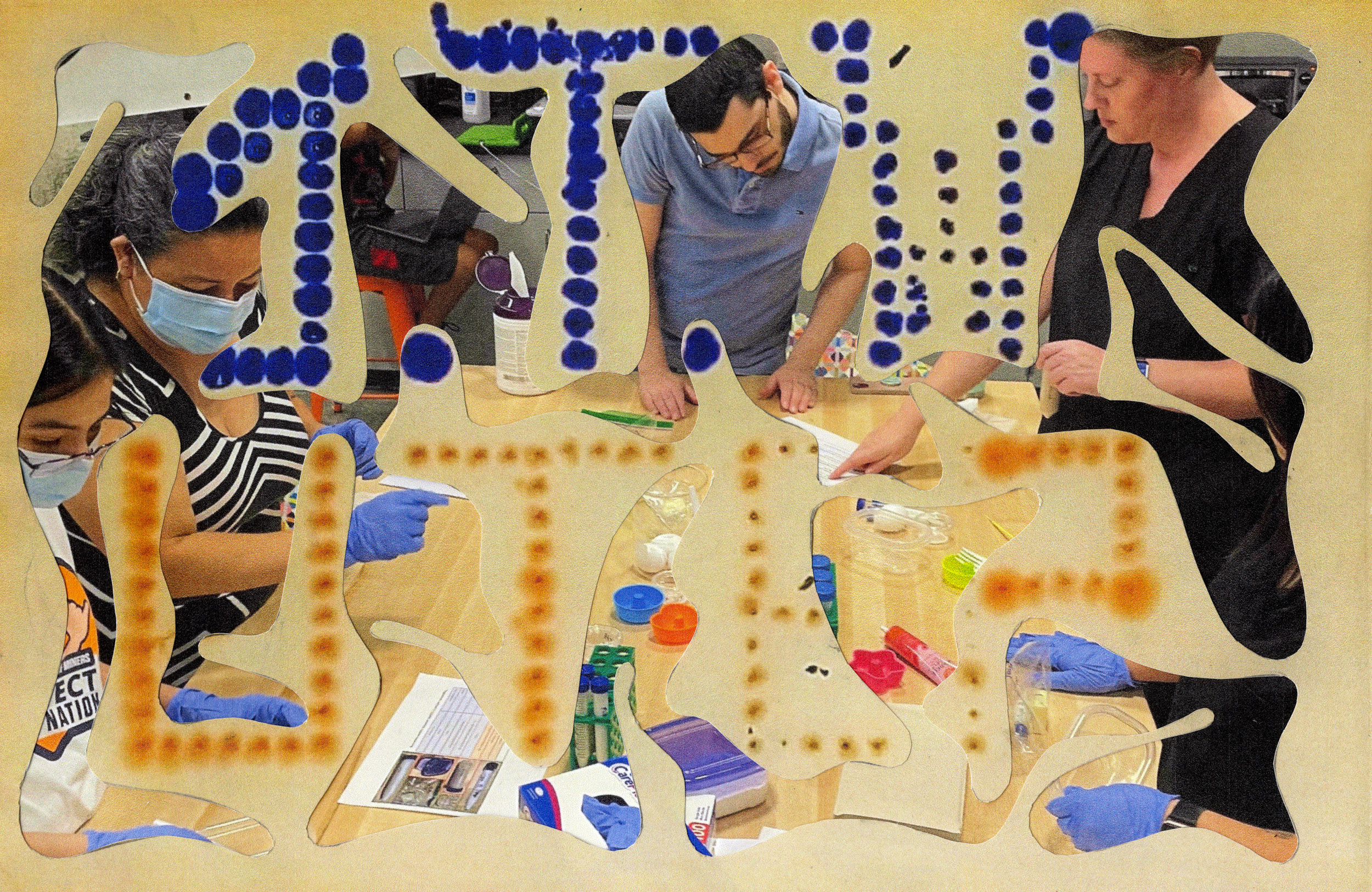
Some people may go through all of grad school without ever really being exposed to the ethics of synthetic biology before designing these technologies that are going out into the world. What changes must we make in that pipeline to get where we need to be?
Walker: If I were to infiltrate the system, I would say that pre-service teachers are critical. They’re in a university infrastructure that’s not entirely bogged down by [traditional curriculum] standards, like school environments would be. So they’re spaces where we can instill these important ideas in the next generation of teachers. We need to invest in supporting university spaces to actually support that kind of activity and engagement. There are a lot of universities, for instance, who have classrooms or maker spaces, but no water line. Even if everything is portable and low cost, without water it’s really hard to do a lot of the things you need to do in life sciences. So I think universities are probably the starting point, pre-service teacher education specifically. I think about that because teachers have a lot of power when it comes to establishing the priorities in the classroom.
Chappell: I think a lot about the complementary side of things, how we can support the informal spaces for education. What even are the other community spaces that people engage with biology, biotechnology, and biodesign? What if you could roll in there and learn about cooking, or gardening, or learn about fishing, things that people are already really interested and excited about as an entry point for constructionist learning.
I wonder whether we could support this through something like the Carnegie Library System, where a large philanthropist starts building this public infrastructure for the civic good? Are there roles to play for federal, state and local governments to build out these spaces or create new grant programs to support the people who are already doing this good work? How do we have somebody’s auntie be like, “You know, little Isabel? Do you know what I hope that you will be when you grow up? A community engaged biologist, a LABrarian” and turns out Isabel is a community engaged biologist and educator today. What if that was something that was in people’s imaginations as things that they aspire their children to become?
Walker: I’m a first generation college student. No one else in my immediate family went to college. I’m an African American, Mexican American — a man whose life changed because of education and because of life sciences. I grew up poor, my family didn’t have much and today it’s a lot different for me. And so when I think about the research, and when I think about innovating, I don’t do so for the hope of enriching people for socioeconomic benefits. I do so because I care about giving voice to people who are and were traditionally marginalized in these areas.
Sure we want to think about creating new scientists. But maybe if we can just expose people to these areas, to the extent that they feel like they can leverage it as a tool, or be critical of it in the ways that infiltrates their community, then we’ve created an agency that otherwise didn’t exist, and an empowerment that helps them transcend barriers in the ways that I have been able to.
